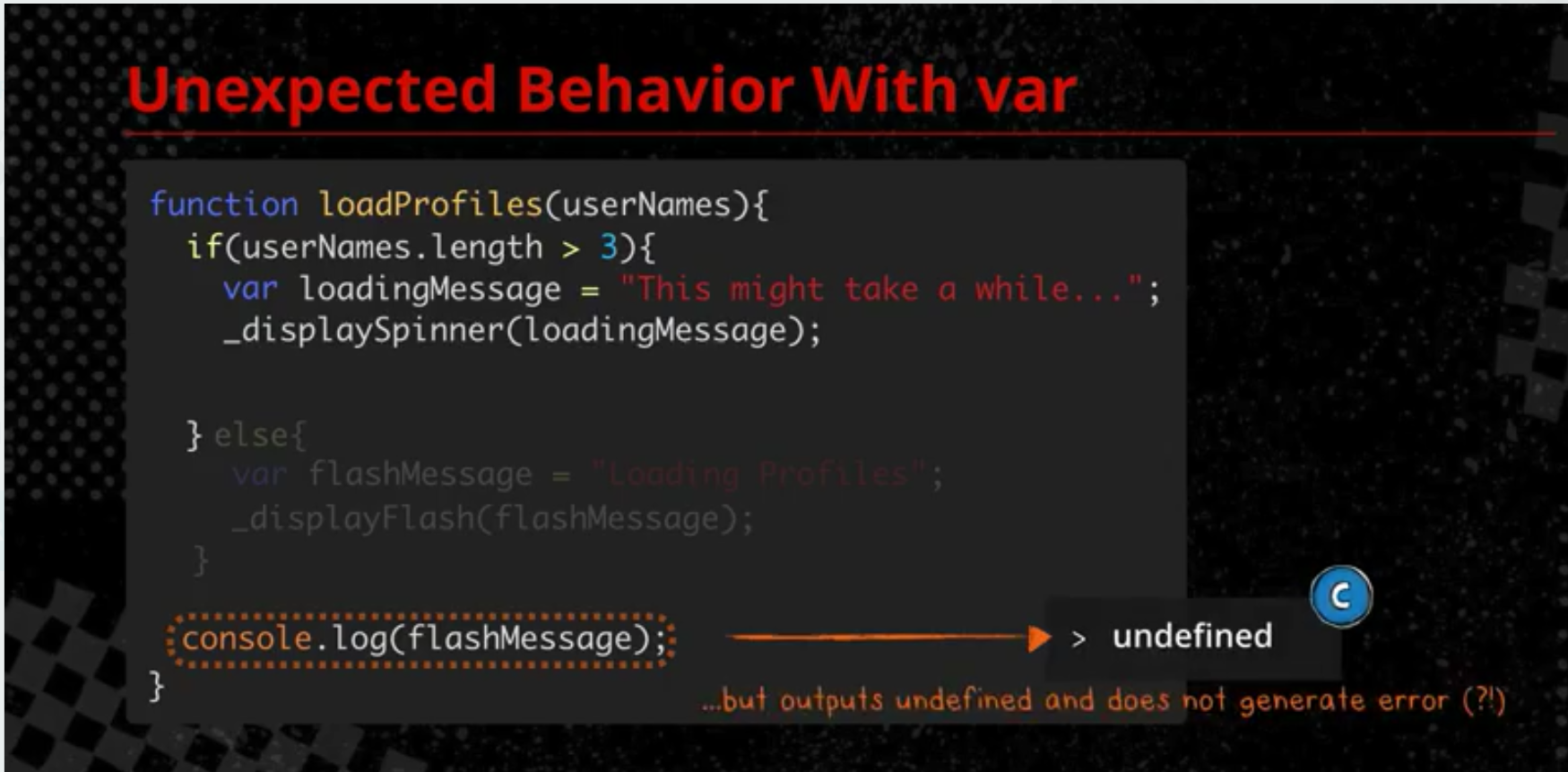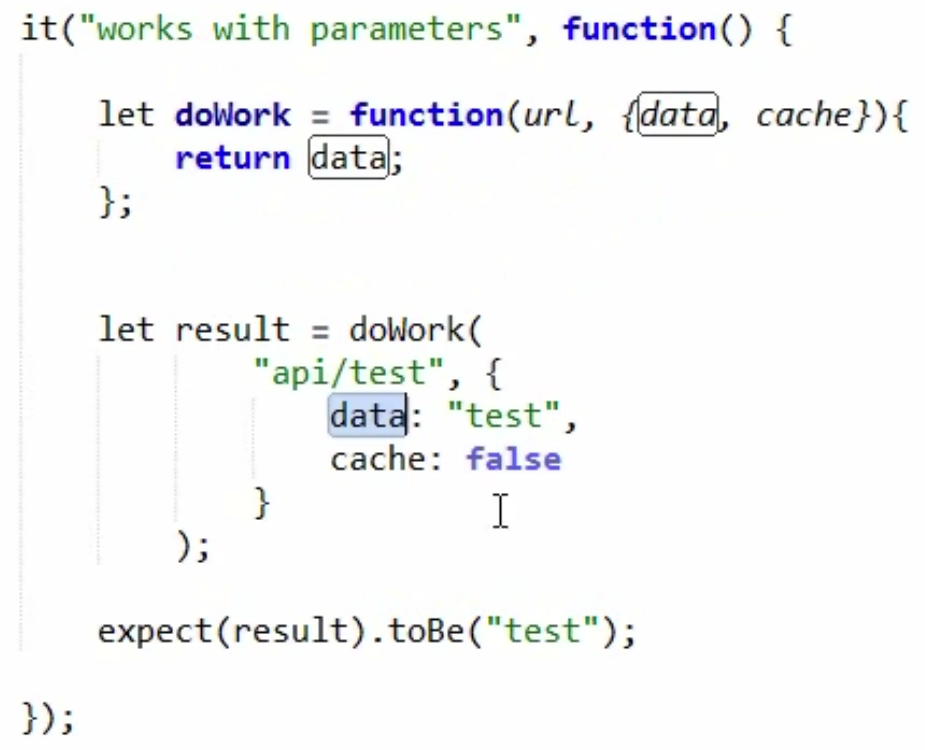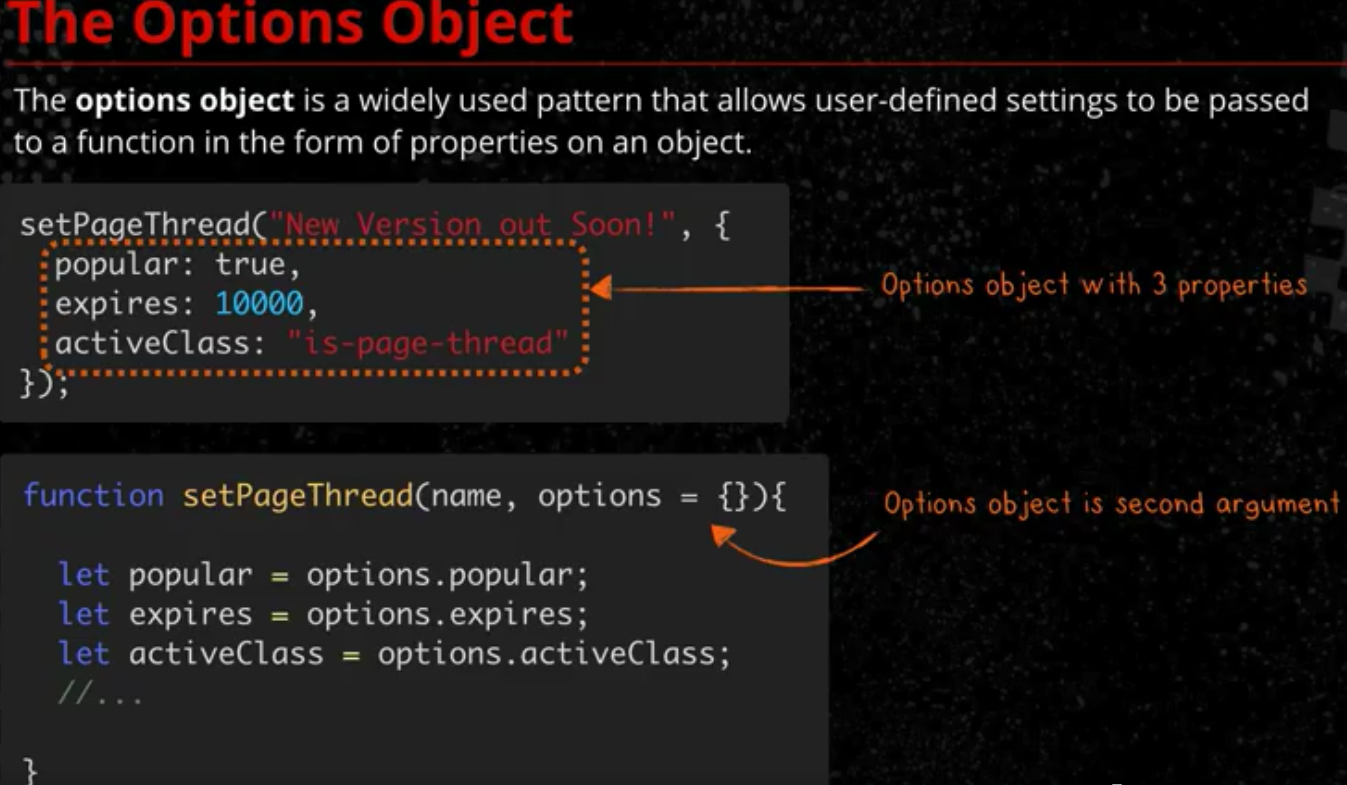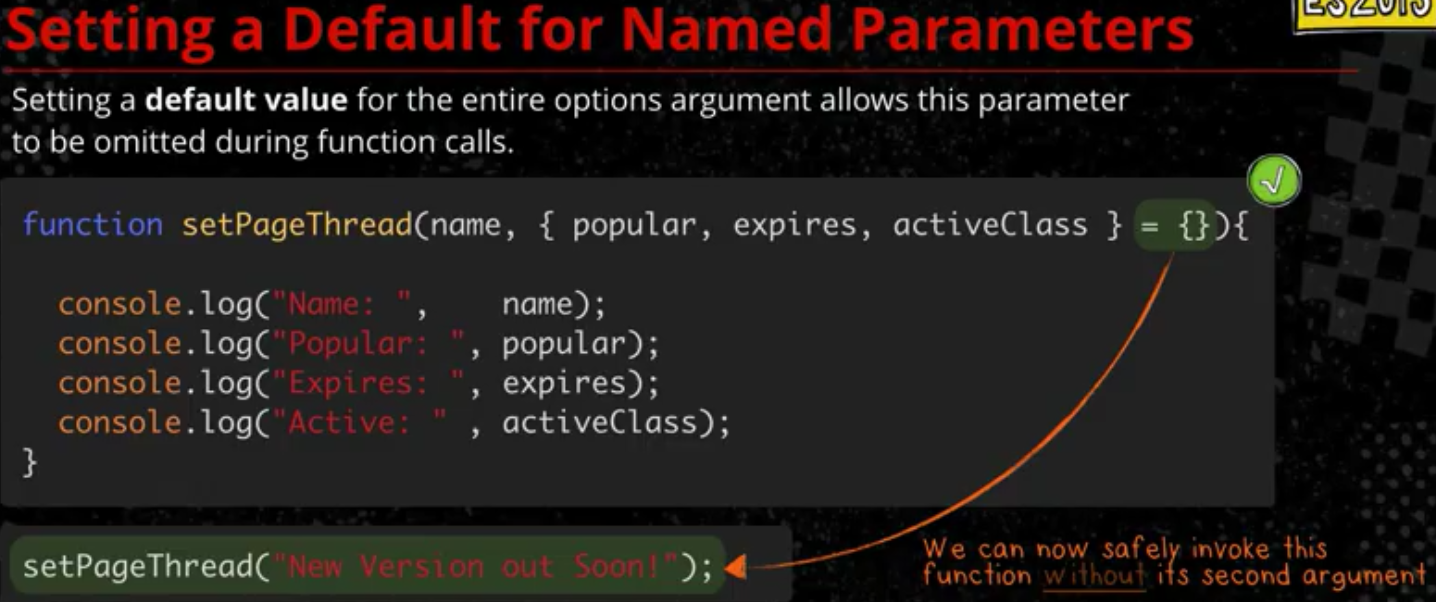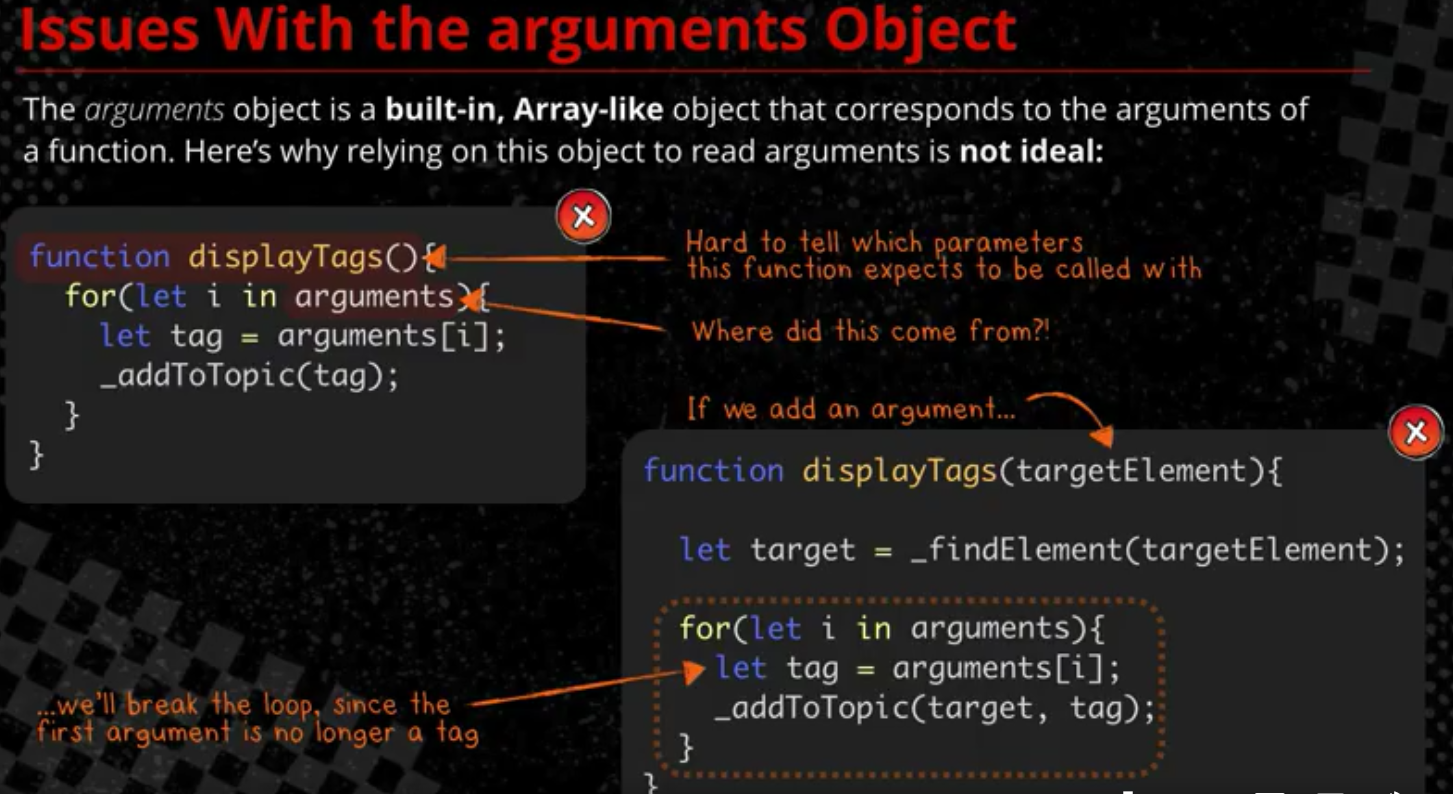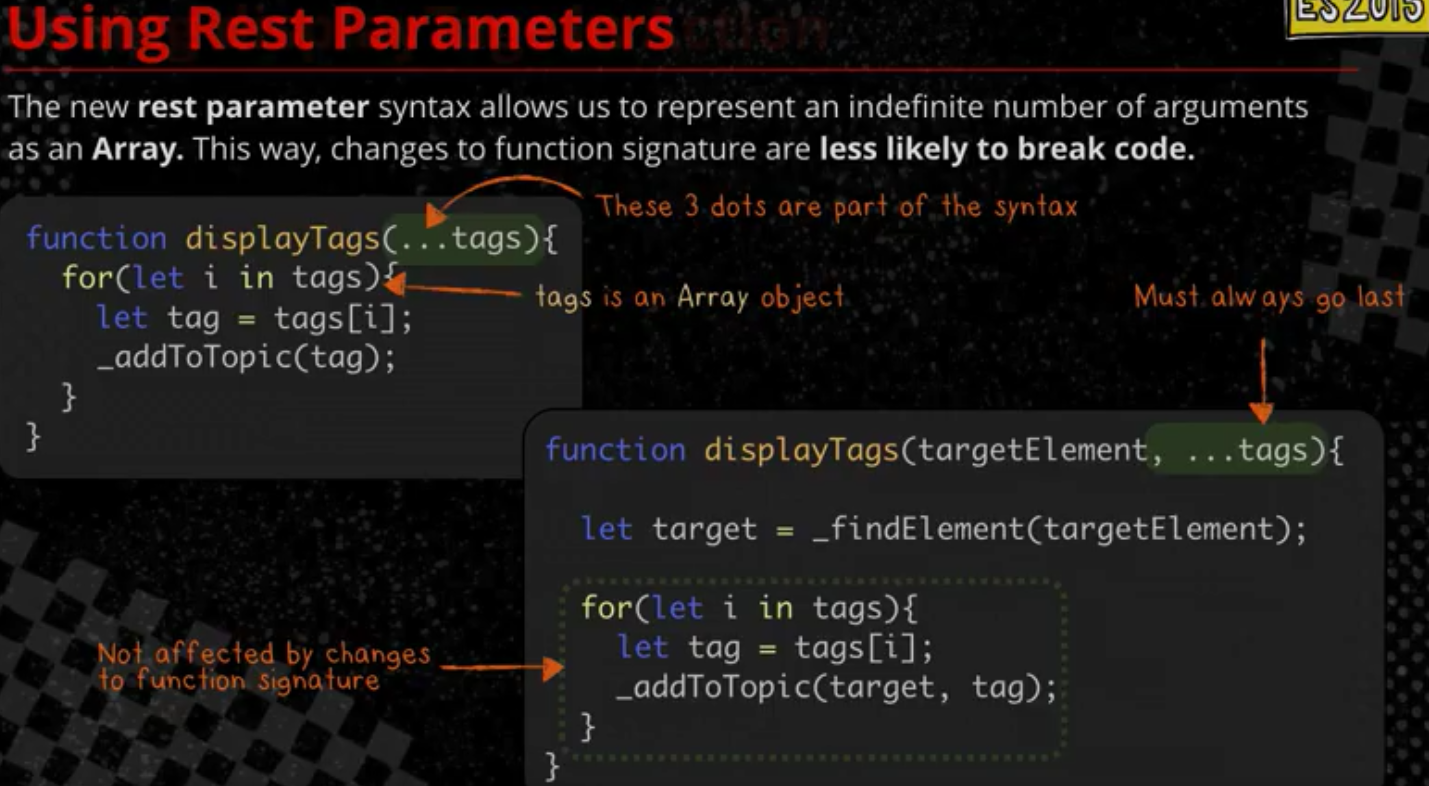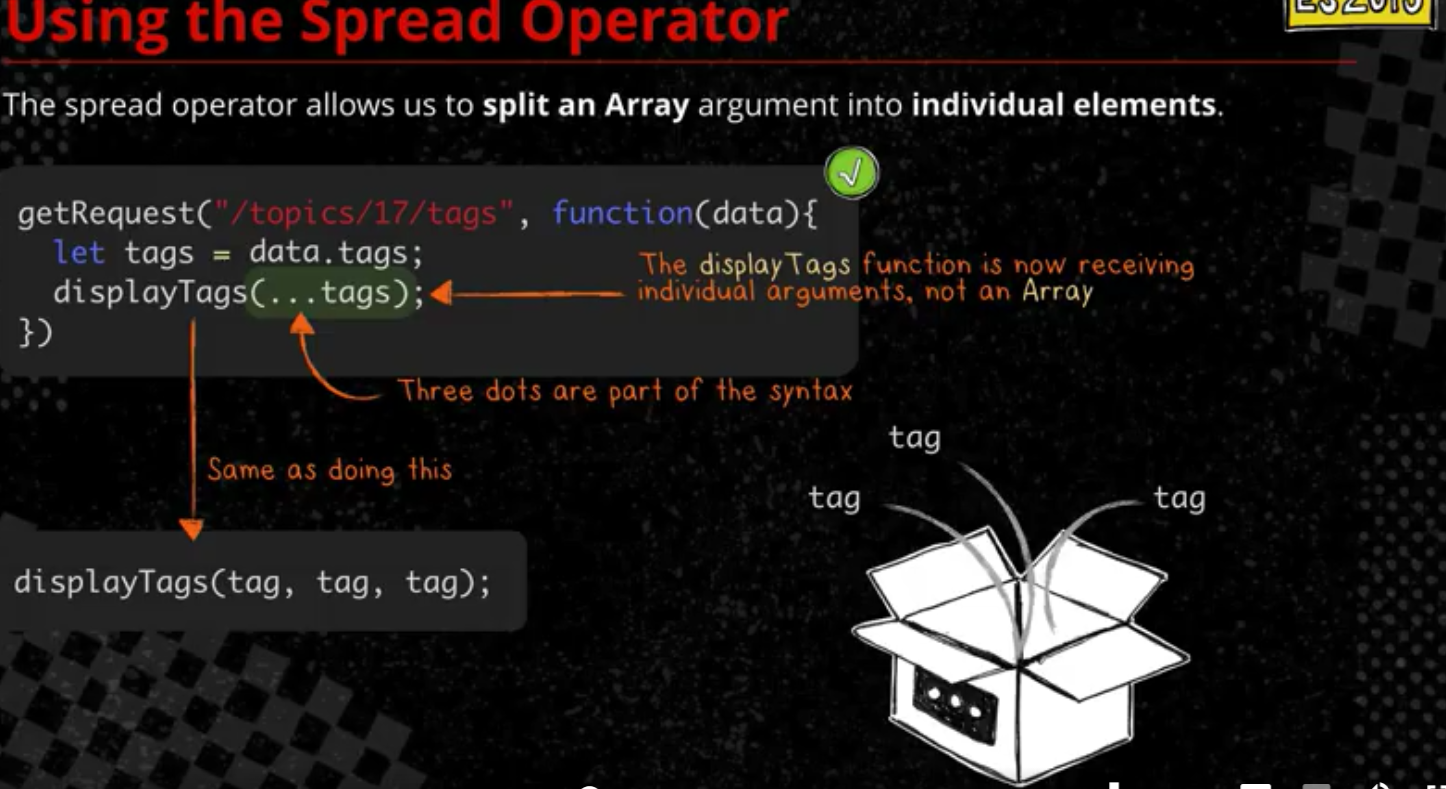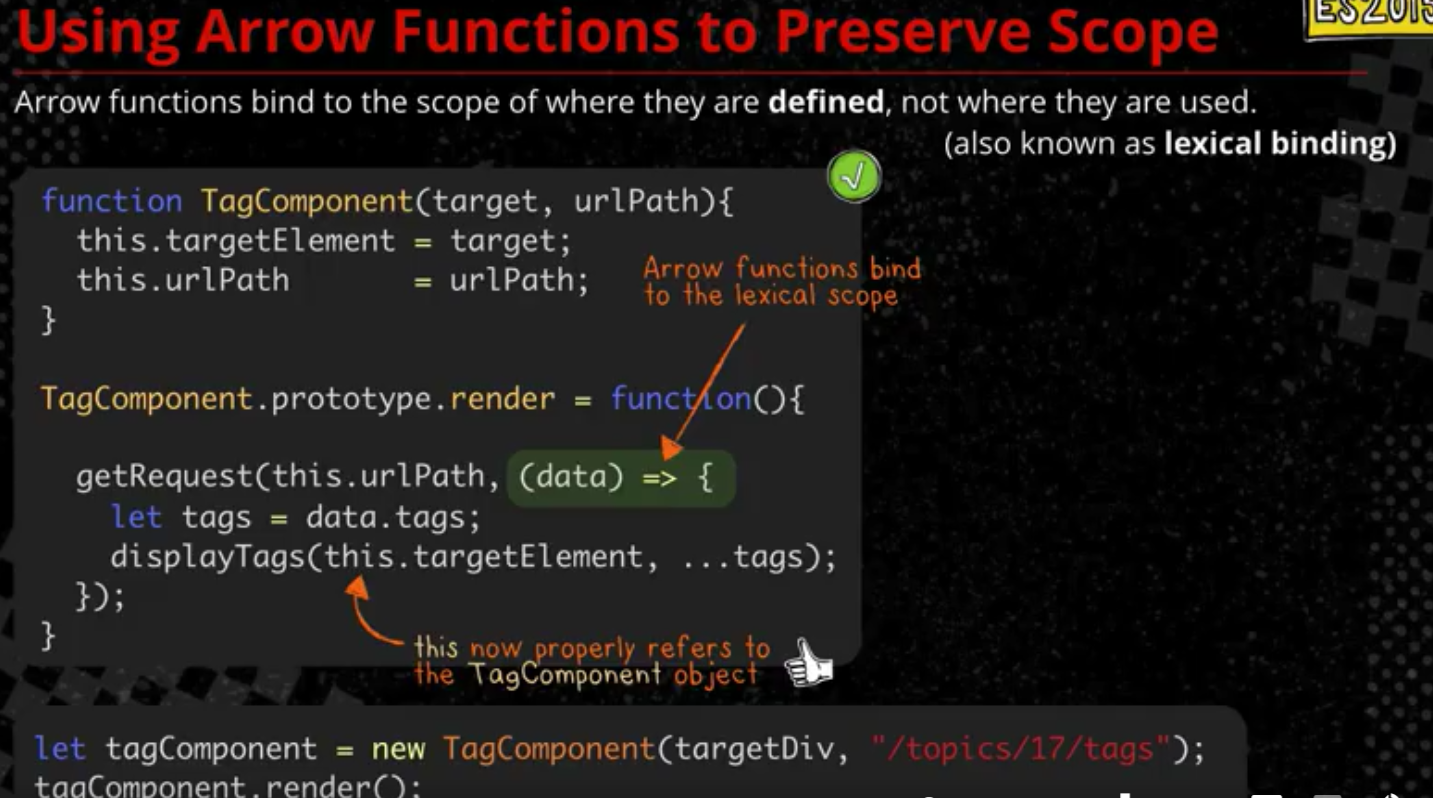Basics of ES6
17 Dec 2016Variables
- Try to use
letinstead ofvarto avoid issues like “undefined” variables. - When you use
var, JS does hoisting - moves all the variable declaration to the top. - So if there is any
varwhich is declared somewhere in the code and you try to access it before its declaration, it will be set to undefined. - For the same case, if you use
let, its scope is defined within that context. Referencingletvariables elsewhere will result in error.
letvariables cannot be redeclaredconstare read-only constants & must be assigned an initial value.
Destructuring
- Allows you to assign variables in bulk or interchange values.
let x = 2;
let y = 3;
//this will interchange the values
//on the LHS, its not depicting its an array, instead the list of varibles.
[x,y] = [y,x]let [x,y] = [1,2];
//if you need to skip some values
let [,x,y] = [1,2,3];
//for object literals
let x = {
firstName: 'Ranjith',
lastName: 'Nair'
};
//the first one in the declaration should be the object property name
let {firstName: ownerFirstName,
lastName: ownerLastName} = x;
//if the variable name is same, you dont need to specify that
let {firstName, lastName} = x;Function Defaults
-
You can use default values for parameters inside the function signature which can prevent from putting in null checks.
-
The default parameters would only be set when those parameters are not at all sent.
loadProfiles(['Roger','Nadal','Murray']);
function loadProfiles(players = []) {
let players_length = players.length;
//would have failed if we hadn't initialized the parameter.
}Options Object
- Useful when passing in an object parameter.
- options parameter can be initialized to empty object within the function definition.
Using Named parameters
- Can be used as a replacement for
optionsobject.
Arguments object
- Built in array-like object used for parameters.
- Used when there are varying number of parameters which can be passed on to the function.
Rest parameters
- Denoted by 3 dots and signifies as a pure arguments array.
- Wont break the function if a new parameter is explicitly added to the function signature.
- Must always be the last parameter.
- If the value is not sent, it will be an empty array.
Spread Operator
- Split an array arguments into individual elements.
- Syntax is same as Rest parameter except the context where its applied.
Template literals
- Useful for concatinating strings.
let category = "music";
let id = "10"
let url = `http://myapiserver/${category}/${id}`;Class
- Earlier we had to create objects and use prototypes to define certain methods.
- Now we can define classes and create constructors within it.
class Employee {
constructor(name) {
this.empName = name;
}
getEmployeeName() {
return this.empName;
}
//getters and setters
get name() {
return this.empName;
}
set name(value) {
this.empName = value;
}
}
let e1 = new Employee("Ranjith");
console.log(e1.getEmployeeName);
//getters and setters
console.log(e1.name);
e1.name = "Ram";Converting functions to objects
- For encapsulation, reusability and testability.
- Can be used in combination with arrow function.
- Arrow function helps a great deal in tackling with scoping issues in callback.
Iterators
let x = [1,2,3,4,5];
let sum = 0;
let iterator = x.values();
let next = iterator.next();
while(!next.done) {
sum += next.value;
iterator.next();
}For of
- Used to loop over values and not keys like for in
let x = [1,2,3,4,5];
for(let i of x) {
console.log(i);
}Arrow functions
- Converting a simple function to arrow functions
var x = function(a) { return a;};
alert(x);
//Arrow function equivalent
var x = a => a;
alert(x);
//When no parameter
var x = () => {alert("testing")};
x();
//multiple arguments
// the bracket outside params is only needed when there are multiple arguments.
var x = (a,b,c) => a+b+c;
alert(x(1,2,3));
//function as parameter
setTimeout( function() {alert("2 seconds passed !");},2000);
setTimeout( () => {alert("2 seconds passed !");},2000);
// fixes the usage of "this" in callbacks
setTimeout(() => {
//the value of this here will be same as its in outer context
})See the Pen vKdOzg by Ranjith (@ranjithnair) on CodePen.
